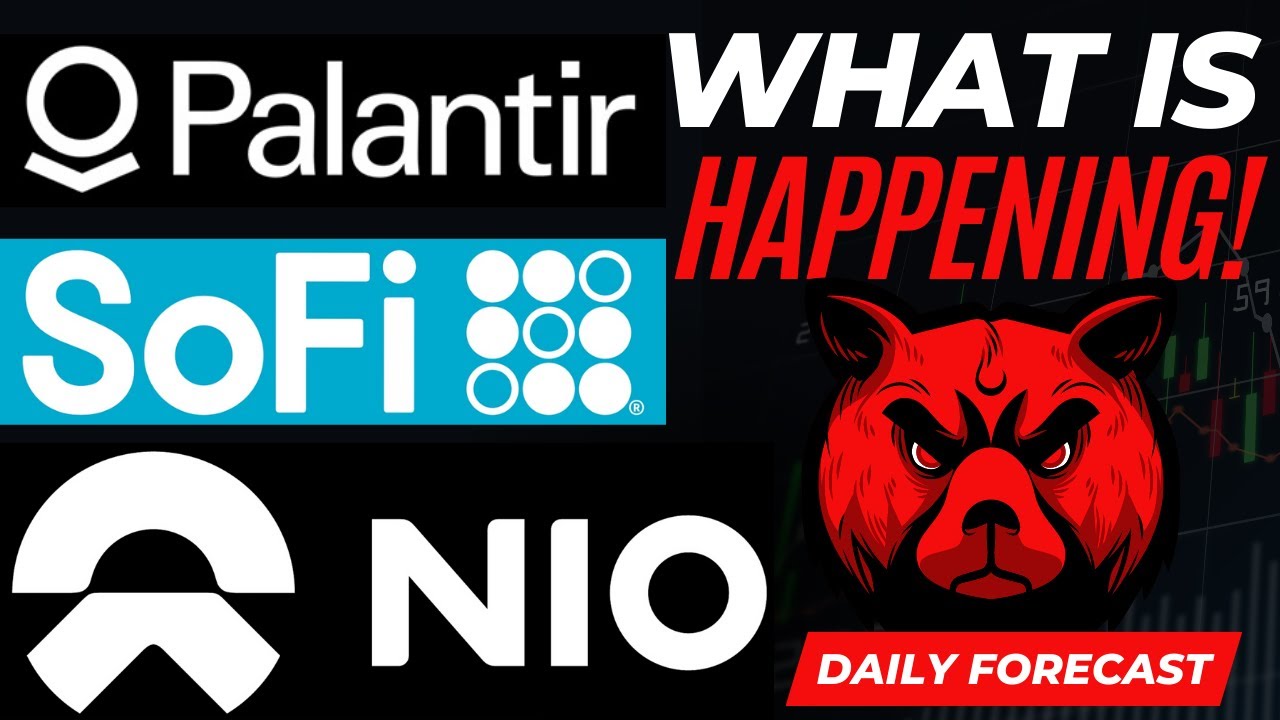BMW And Porsche's China Challenges: A Broader Look At Auto Industry Headwinds

Table of Contents
Intensifying Competition in the Chinese Luxury Car Segment
The Chinese luxury car market is far from the predictable duopoly it once was. Domestic brands, such as Nio, XPeng, and Li Auto, are rapidly gaining ground, leveraging technologically advanced vehicles and increasingly sophisticated marketing strategies. These up-and-coming competitors are aggressively challenging established players like BMW and Porsche, forcing a reassessment of market strategies and pricing models.
- Rise of domestic EV brands: Chinese electric vehicle (EV) brands offer competitive pricing and technologically advanced features, directly impacting the market share of traditional luxury players. They are appealing to a younger, tech-savvy generation of Chinese consumers.
- Shifting consumer preferences: There's a clear and accelerating consumer preference for electric and hybrid vehicles in China, putting pressure on BMW and Porsche to significantly expand their EV offerings. This requires substantial investment in R&D and manufacturing capabilities.
- Profit margin pressure: The increased competition is inevitably squeezing profit margins. Luxury brands are forced to offer more competitive pricing or risk losing market share to agile domestic competitors.
- Localization is key: To succeed in China, luxury brands must adapt to the unique preferences and cultural nuances of Chinese consumers. This includes localization of features, marketing campaigns, and after-sales service.
Navigating China's Shifting Regulatory Landscape
China's government plays a significant role in shaping the automotive industry, influencing everything from emission standards and import tariffs to incentives for electric vehicles. Successfully navigating this regulatory landscape is not just beneficial—it's essential for long-term viability.
- Stringent emission regulations: China's increasingly stringent emission regulations are pushing the industry towards electrification at an unprecedented pace. This demands substantial investment in electric vehicle technology and infrastructure.
- Fluctuating import duties: Changes in import tariffs can significantly impact the pricing strategies of luxury brands like BMW and Porsche, making consistent profitability challenging to maintain.
- Government support for domestic brands: The Chinese government actively supports domestic EV manufacturers through subsidies, tax breaks, and favorable policies, creating an uneven playing field for foreign competitors.
- Bureaucratic hurdles: Navigating the complexities of Chinese bureaucracy can be a significant hurdle for foreign companies, requiring substantial resources and expertise to comply with all regulations.
The Impact of Supply Chain Disruptions
The global chip shortage and broader supply chain disruptions continue to pose a major challenge to the automotive industry in China. These disruptions have a cascading effect, impacting production, delivery timelines, and ultimately, customer satisfaction.
- Semiconductor shortage: The ongoing difficulty in sourcing essential components like semiconductors significantly limits production capacity, leading to delays and unmet demand.
- Increased raw material costs: Rising costs for raw materials directly impact manufacturing costs, further squeezing profit margins and potentially leading to price increases for consumers.
- Logistics bottlenecks: Logistics challenges in getting vehicles from factories to dealerships add to the overall complexities and increase delivery times.
- Production capacity limitations: Supply chain issues directly impact a manufacturer’s ability to meet production targets and fulfill customer orders, resulting in lost sales and reputational damage.
Adapting to Evolving Consumer Preferences in China
Understanding and catering to the specific preferences of Chinese consumers is paramount for success. This extends beyond simply selling luxury cars; it necessitates a deep understanding of digital marketing, customer experience, and evolving brand loyalty.
- Connected car features: The demand for connected car features and advanced technology is exceptionally high in China. Luxury brands must offer cutting-edge technology to stay competitive.
- Digital marketing dominance: A strong online presence and effective digital marketing strategies are crucial for reaching and engaging Chinese consumers. Traditional marketing methods are increasingly less effective.
- Personalized customer experience: Providing personalized customer experiences is essential for building brand loyalty and fostering positive word-of-mouth marketing.
- Shifting brand loyalty: Younger generations of Chinese consumers demonstrate less brand loyalty than previous generations, requiring brands to consistently innovate and deliver exceptional experiences to secure customer retention.
Conclusion
The Chinese automotive market presents a complex mix of opportunities and challenges for luxury brands like BMW and Porsche. Success hinges on a strategic approach that proactively addresses intensifying competition, regulatory hurdles, supply chain disruptions, and evolving consumer preferences. By adapting to these dynamic conditions, investing in innovation, and fostering deep cultural understanding, these brands can hope to maintain market share and achieve sustained growth in this crucial market. Understanding the nuances of the China auto market is paramount for future success. Stay informed about the latest developments impacting BMW and Porsche China by following industry news and analysis to gain a competitive edge.

Featured Posts
-
 Investing In Palantir A Practical Guide To Buying Palantir Stock
May 10, 2025
Investing In Palantir A Practical Guide To Buying Palantir Stock
May 10, 2025 -
 The China Market Challenges Facing Bmw Porsche And Other Automakers
May 10, 2025
The China Market Challenges Facing Bmw Porsche And Other Automakers
May 10, 2025 -
 Nuclear Power Plant Construction Trumps Team Weighs Accelerated Timeline
May 10, 2025
Nuclear Power Plant Construction Trumps Team Weighs Accelerated Timeline
May 10, 2025 -
 Nl Federal Election Know Your Candidates Before You Vote
May 10, 2025
Nl Federal Election Know Your Candidates Before You Vote
May 10, 2025 -
 Investing In Palantir Assessing The Risk And Reward For 2025 Growth
May 10, 2025
Investing In Palantir Assessing The Risk And Reward For 2025 Growth
May 10, 2025
